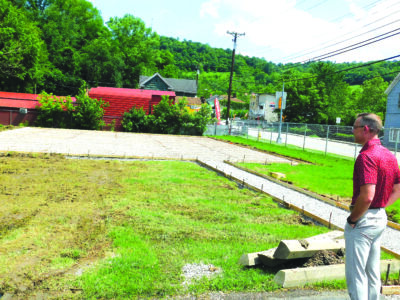Report: As fracking increases, so do oil and gas industry inefficiencies

CLEVELAND — Analysis by FracTracker Alliance on data from the oil and gas industry revealed a pattern of increasing water withdrawals and waste production associated with high-volume hydraulic fracturing in the Ohio River Valley region.
“There are high costs associated with fracking that have not been adequately accounted for,” said Ted Auch, a senior analyst with FracTracker Alliance, a national nonprofit organization that studies, maps and communicates the risks and impacts of oil, gas and petrochemical development.
According to the analysis, data from 2008 to 2021 in Ohio, Pennsylvania and West Virginia shows growing inefficiency within the industry. The ratio of resources required to extract gas has been rising, despite industry assurances of long-term well productivity. On average, well production declines by 85 percent within two years.
“The industry, which has never been known for its efficient use of resources, is actually becoming less efficient over time,” Auch said. “It’s requiring increasingly more resources to produce less gas. The amount of gas being produced from wells also declines more quickly than it used to. This means wells have to be re-fracked to boost or stabilize production, which wastes even more natural resources.”
In addition to shedding light on the industry’s high water consumption, the analysis also factors in the issue of injection waste and its impact on Ohio, with the state’s Class II wells serving as a major disposal method for liquid fracking waste from neighboring states.
According to Auch, a more comprehensive pricing strategy for water and waste management, as well as enhanced monitoring and regulation of water withdrawals and usage, are critical to addressing the long-term environmental impacts of fracking.
“We looked at the data to more comprehensively show how fracking is impacting Ohio and the surrounding areas,” Auch said. “The results are disturbing.”
Key findings of this analysis:
¯ There has been a 300-500% increase in the amount of water and sand used for fracking across Ohio, Pennsylvania, and West Virginia.
¯ Permitting and tracking of water withdrawals and usage is lacking across the Ohio River Valley.
¯ Approximately 10-15% of oil and gas industry data excluded from analyses due to errors or omissions in industry reporting.



